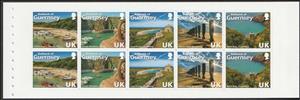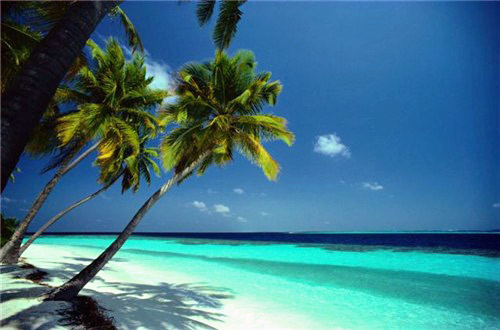Booklet Pane: Love the Bailiwick (Guernsey 2014)
Love the Bailiwick (Guernsey 2014)
30 July (Guernsey ) within release Love the Bailiwick goes into circulation Booklet Pane Love the Bailiwick face value 10*UK No Face Value
| Booklet Pane Love the Bailiwick in catalogues | |
|---|---|
| Stanley Gibbons: | Sg: GG 1530c |
Booklet Pane is square format.
Contains SG nrs 1530 to 1534 each x2Also in the issue Love the Bailiwick:
- Stamp - The Little Chapel face value GY;
- Stamp - Bec du Nez face value GY;
- Stamp - Torteval Church face value GY;
- Stamp - Moulin Huet face value GY;
- Stamp - St Peter Port Harbour face value GY;
- Stamp - Fisherman's Beach, Herm face value UK;
- Stamp - Creux Harbour, Sark face value UK;
- Stamp - Fort Essex, Alderney face value UK;
- Stamp - Vazon Bay, Guernsey face value UK;
- Stamp - Petit Bot, Guernsey face value UK;
- Booklet - Guernsey Cow face value 10*GY;
- Booklet Pane - Love the Bailiwick face value 10*GY;
- Booklet Pane - Love the Bailiwick face value 10*GY;
- Booklet Pane - Love the Bailiwick face value 10*UK;
- Booklet Pane - Love the Bailiwick face value 10*UK;
- Booklet - Vazon Bay face value 10*UK;
- Se-tenant - Love the Bailiwick face value 5*GY+5*UK;
Booklet Pane Love the Bailiwick it reflects the thematic directions:
A beach is a landform alongside a body of water which consists of loose particles. The particles composing a beach are typically made from rock, such as sand, gravel, shingle, pebbles, etc., or biological sources, such as mollusc shells or coralline algae. Sediments settle in different densities and structures, depending on the local wave action and weather, creating different textures, colors and gradients or layers of material.
A building or edifice is a structure with a roof and walls standing more or less permanently in one place, such as a house or factory. Buildings come in a variety of sizes, shapes and functions, and have been adapted throughout history for a wide number of factors, from building materials available, to weather conditions, to land prices, ground conditions, specific uses and aesthetic reasons. Buildings serve several needs of society – primarily as shelter from weather, security, living space, privacy, to store belongings, and to comfortably live and work. A building as a shelter represents a physical division of the human habitat (a place of comfort and safety) and the outside (a place that at times may be harsh and harmful).
A fortification (also called a fort, fortress, fastness, or stronghold) is a military construction designed for the defense of territories in warfare, and is used to establish rule in a region during peacetime. The term is derived from Latin fortis ("strong") and facere ("to make").
A landscape is the visible features of an area of land, its landforms and how they integrate with natural or man-made features. A landscape includes the physical elements of geophysically defined landforms such as (ice-capped) mountains, hills, water bodies such as rivers, lakes, ponds and the sea, living elements of land cover including indigenous vegetation, human elements including different forms of land use, buildings and structures, and transitory elements such as lighting and weather conditions. Combining both their physical origins and the cultural overlay of human presence, often created over millennia, landscapes reflect a living synthesis of people and place that is vital to local and national identity. The character of a landscape helps define the self-image of the people who inhabit it and a sense of place that differentiates one region from other regions. It is the dynamic backdrop to people’s lives. Landscape can be as varied as farmland, a landscape park, or wilderness. The earth has a vast range of landscapes, including the icy landscapes of polar regions, mountainous landscapes, vast arid desert landscapes, islands and coastal landscapes, densely forested or wooded landscapes including past boreal forests and tropical rainforests, and agricultural landscapes of temperate and tropical regions.
A port is a maritime facility comprising one or more wharves or loading areas, where ships load and discharge cargo and passengers. Although usually situated on a sea coast or estuary, ports can also be found far inland, such as Hamburg, Manchester and Duluth; these access the sea via rivers or canals. Because of their roles as ports of entry for immigrants as well as soldiers in wartime, many port cities have experienced dramatic multi-ethnic and multicultural changes throughout their histories
A ship is a large watercraft that travels the world's oceans and other sufficiently deep waterways, carrying passengers or goods, or in support of specialized missions, such as defense, research and fishing. Historically, a "ship" was a sailing vessel with at least three square-rigged masts and a full bowsprit. Ships are generally distinguished from boats, based on size, shape and load capacity.





